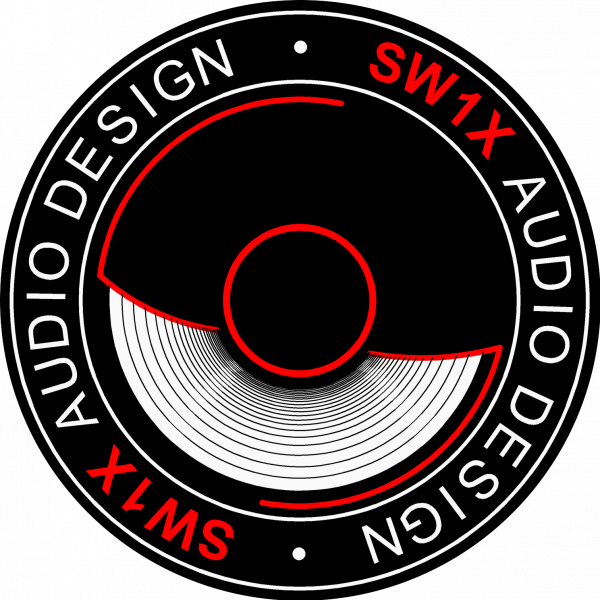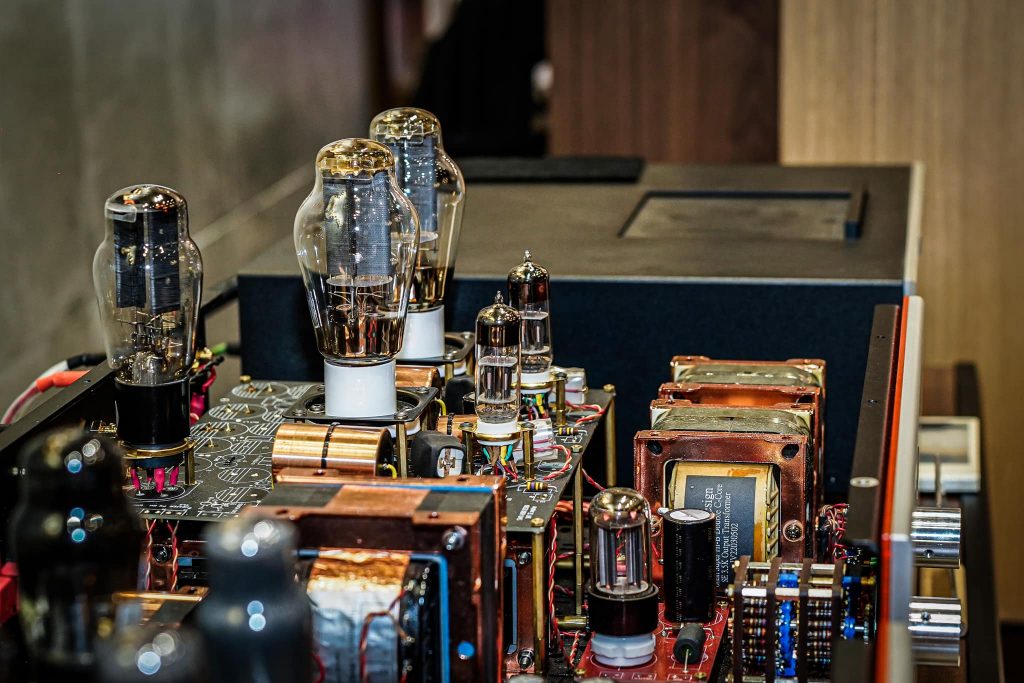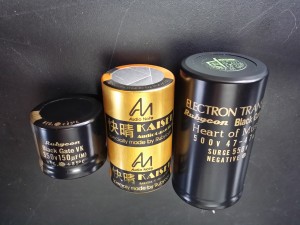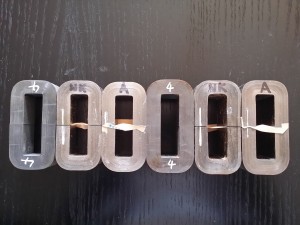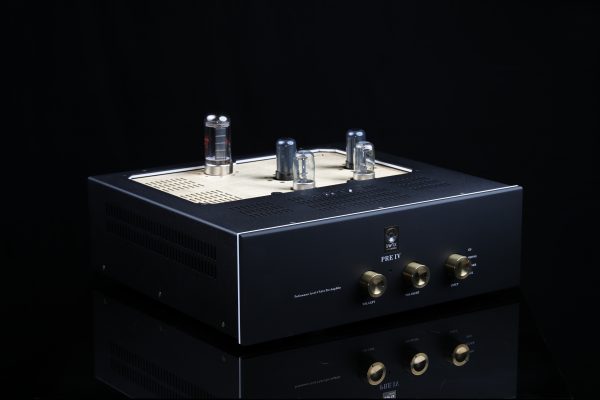What makes SW1X Audio Design™ sound?
We create all our audio products with one objective in mind: audio equipment must behave like a universal musical instrument, i.e. be able to reproduce musical information as intended by the musicians. In order to achieve this we pay utmost attention to every aspect of its conception, prototyping, design implementation and its final production. We place a great amount of value to following areas: Components & Materials Choice, Circuit Design and last but not least Harmonic Matching of materials & components in a circuit- the key to musically sounding product. The quality, combination and sophistication of those three areas defines the SW1X Performance System.
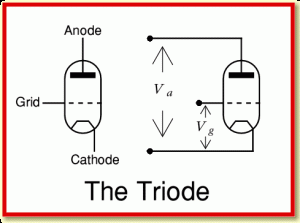
Choice of components & materials
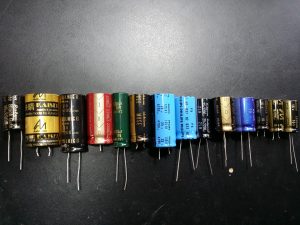
All materials are very audible in our elegantly simple circuit designs. Every material and component has its own distinct sound character. Understanding how materials & components and their interactive behaviour affect the sound is an essential aspect of the overall knowledge necessary to create musical sounding audio products.
- Conductors: All wires are specially selected silver or/and copper based alloys optimised for direction and chosen according to their tonal qualities. All wiring from input to output is wired by hand, point to point with carefully selected solder. If somebody thinks that the choice or the direction of passive components is unimportant, please read the harmonic matching section.
- Capacitors: Very important aspect is capacitor choice as their interactive behavior with all passive components is crucial to any circuit. The sonic character as well as their imperfections (sonic deficiencies) of those components largely determine of how the product is going to sound. We routinely voice all possible capacitors that we come across. The current trend in current availability of good sounding (least deficient) capacitors is worrisome as more and more capacitors manufactures prefer to produce low cost mainstream consumer types. That limits our choice significantly and makes it more difficult to source good sounding ones. Out first capacitor of choice would be Black Gate capacitors (out of production since 2006) – those are currently available in limited quantities for very high prices (therefore reserved for Signature versions of our products). Second is current production Kaisei, Silmic and third is Pureism, Philips BC (also out of production) along with AN Standard and some out of production ROE, Panasonics and Elnas. For output signal decoupling we prefer Audio Note Copper foil or vintage Siemens or Bosch PIO along with BG where possible.
- Resistors: All resistors are carefully chosen according to their tonal qualities and optimised for sound according to their direction. We mostly prefer to use over-specified 1W or 2W Allen Bradley carbon resistors because of their thicker musical body & transparency and AN tantalum resistors for even higher performance level products but also like to mix and match some Vishay, Welwyn and Kiwame in certain applications, which require high power.
- Transformers and chokes: Usually are the most expensive passive components. All our transformers are custom made, oversized and over-specified by 2-3 times. We use either EI, C or Torroidal cores. We prefer to use UHiB silicon- steel core material (the finest silicon steel material available, made in Japan only!), in house, prototyped, designed and wound (on request with vintage copper or silver) C cored signal output transformer for the single ended or balanced output stages. Every main circuit has a dedicated transformer. Therefore, there are usually minimum 2 transformers in each chassis.
- Active components: We prefer valves over transistors foremost for sonic reasons, their natural voltage amplification linearity and the resulting elegant simplicity of the circuit design. For output stage applications we prefer E182CC/5687/6N6P double triode valve family and induction loaded power output valves EL84 and 71A/45/2A3 for higher performance levels. For high mu applications we prefer E80F/EF86 pentodes and EC806S/EC86 single triode super valves. However, there are some applications where valves are far from ideal to fit their purpose such as I/U conversion and low voltage stabilisation. In those applications we choose to utilise specially selected transistors made of Germanium.
- Diodes are very overlooked components in audio design. Most modern diodes like the ultra fast switching type (that includes HexFred and Schottky types), which were originally designed for switching power supplies, are unusable in audio circuits because of hardness & brightness and the excessive switching peaks they produce. Therefore we routinely look for well balanced diodes with soft, clear & and full bodied sound characteristics. The choice and the availability of great sounding diodes is very limited to say the least.
- All chassis are designed specifically for valve based circuits. Since all valves produce heat, all our chassis have plenty of openings for ventilation, preventing any possibility of overheating. All of our chassis are low resonance chassis design made of thick aluminum. The chassis of higher performance level products is additionally thickly powder coated to prevent any ringing and also for enhanced durability & scratch resistance.
- PCBs have a sound of their own too. Their design and layout predominantly defines the sound but also the material they are made of. We use the most expensive and better sounding PTFE substrate based board material with carefully designed layout non coated copper conductive traces, thickly gold plated and covered with a specially mixed natural resin based lacquer.
- Connectors such as IEC, RCA sockets, power switches and mains wiring need to be of highest quality as they tend to affect the sound adversely. We, therefore, pay utmost attention to them or omit them altogether if possible. RCA sockets sound better when they are made of high content copper brass material preferably silver plated (not gold plated as it tends to remove low level musical information too much).
- Fuses? Different fuses have different sound signatures. Most of them introduce a brittle bright coloration to the sound and make it sound thinner and less spacious. Very few fuses have a warm and thick sound characteristics. Also the direction of the diode may be a game changer at times.
- Last but not least is the choice of solder. Using current production high silver content and tin solders results in a relatively thin sound, which we are not fond of. We therefore like to mix and match different solders with each other in order to achieve a more balanced presentation of the mid frequency spectrum.
Circuit Design
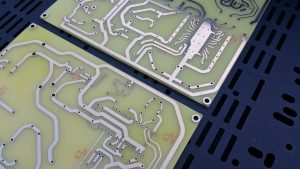
When it comes to circuit design, we are proponents of elegant simplicity & minimalism rather than sheer simplicity. While “less is more” attitude is a good starting point in engineering a circuit and in most cases is better than over engineered “unnecessary complexity”. Maximum simplicity, however, is not necessary better as sheer simplicity comes with a common problem of impedance mismatch. It must be addressed in all circuit designs otherwise simplicity is counter-productive and becomes as detrimental as over-engineering. Moreover, with elegant simplicity approach quality of materials becomes a crucial factor as everything makes a difference. We design our circuits based on established technology and timeless or classic concepts with following criteria in mind:
- Single ended valve amplification, class A, zero negative feedback circuits only! All our output stages are designed to be low output impedance with elegantly simple fixed cathode bias, either resistor or induction loaded anode follower, capacitor or transformer decoupled single ended or balanced topology. No op-amps as these are complex integrated circuits with dozens of transistors, resistor and linearity corrective negative feedback loops, which tend to deaden music. Also, we do not employ integrated voltage regulators such as LM317 and L7XXX because of their dull, greyish and sandy sound signature.
- We are proponents of NOS – non over sampling, i.e. zero filtering in the digital domain approach. This insures that all digital information of a recording is not manipulated in any way. Over-sampling and noise shaping (parts of digital filtering process), which is the basis of the current production Delta Sigma DAC types (along with their integrated op-amps) destroy musicality by manipulating & altering the original recording.
- We employ only the finest R2R DAC designs because of their potential for maximum musical performance. Not only is (was) R2R more expensive to produce but also zero filtering in the digital domain is only possible with R2R type of DACs. In our book, the finest ever created R2R DACs are TDA1541, TDA1543 and PCM56/58.
- Since all our DACs are R2R with tiny current output, we offer both passive as well as active I/U conversion methods. In all our higher performance levels we employ active I/U conversion method based on a pair of specially selected Germanium transistors with shunt voltage regulated power supply. R2R in combination with active I/U (discrete design in SW1X’s way) pretty much resembles the sound of modern R2R discrete DACs but with a hint of soft & full bodied vintage flavor.
- Power supply, irrespective of the topology, is positioned as close as possible to the active components in order to keep low output impedance, keep the voltage stable and to maximise dynamic behavior
- Power supply design for HV applications such a B+ power supply is CRC, CLC, CLCLC or shunt valve regulated type depending on the SW1X performance level
- Power supply for low voltage applications, where voltage stability is the key, we employ shunt or series voltage regulation based on discrete transistors made of Germanium, at each performance level
- Larger transformer cores with thicker conductors tend to sound fuller (most mainstream manufacturers tend to save here)
- All our phono pre-amplifiers are classic 2 amplification stage designs with passive RIAA equalization and series resistor-less design.
- Less gain stages is better than more- we use 2 gains stages (usually only one) at maximum. More gain stages are counterproductive as more active and passive components are used, which in turn remove low level musical information because of their inherent imperfections
- We intentionally avoid use of any displays, additional switches, LEDs or relays (unlike many of our competitors, who use them extensively to make their products look more appealing) as all of them interfere with the sound
- Every component in our circuits is over-specified so nothing can overheat or break
- The choice of diodes for rectification is detrimental to the sound character
- Chokes are excellent for filtering, we use them whenever possible
Harmonic matching
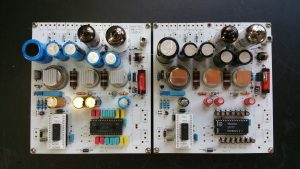
Combining components in a circuit in a harmonic (complementary or synergising) way is an art and the key to a good sound. Harmonic matching is the outcome of careful voicing, listening to all parts separately as well as combined together. It is a fallacy to believe that by employing excellent sounding, exotic components & materials into an elegantly engineered circuit is automatically going to make the product sound at its best. In practice, one may end up with mediocre sound even with finest materials & components in a elegant circuit design because even the finest components & materials are far from being perfect. In the end it is all about the implementation i.e. combining circuit design and selecting materials & components in such a way that the product sounds at its best. Therefore combining components & materials in harmonic way is as equally important as the circuit design and the choice of materials & components.
In practice, there is a possibility that one could build 2 different products e.g. DACs with 2 completely different circuit topologies and they could sound alike if one does not chooses materials and components carefully (it is an issue of homogeneity, more about it read here). Paradoxically, one could build 2 identical DACs made out of absolutely identical parts and both DACs will sound significantly different. Why is there such a deviation one may ask? It is paramount to understand that there is almost infinite number of variations possible of how product could be assembled. We determine which passive components to use and how to implement them in a circuit, so that they complement each other (as opposed to make each other worse off) and determine the direction and position at which each of the components sounds better (best).
Interactive behavior is the most difficult to master in a circuit implementation. The same component sounds differently when applied differently in a circuit. Certain parts can sound excellent in one circuit but when added into another they can make it sound worse. For example, Kaisei capacitors have a clear, bright, warm, oily sound. If the whole circuit is populated with those capacitors, which is fully silver wired the overall sound is perceived as if thin and lacking fullness in bass and appears on the brighter side. If one randomly chose also the resistors one could end up with a bright and fatiguing sound and many bass instruments/notes will sound lacking body & unnatural.
In an elegantly engineered circuit it is extremely difficult to compensate for any shortcomings of its implementation. Therefore, when we design and assemble a SW1X product nothing is really left to chance. Nothing was put randomly into the circuit as every passive component was voiced separately and underwent voicing in the final circuit before a product is assembled and delivered to a customer. After all it is the sound of a complete product not just for the sum of its parts.
Dr. Slawa (SW1X) Roschkow, 06.2017
High-End Performance Audio: a definition by SW1X Audio Design
